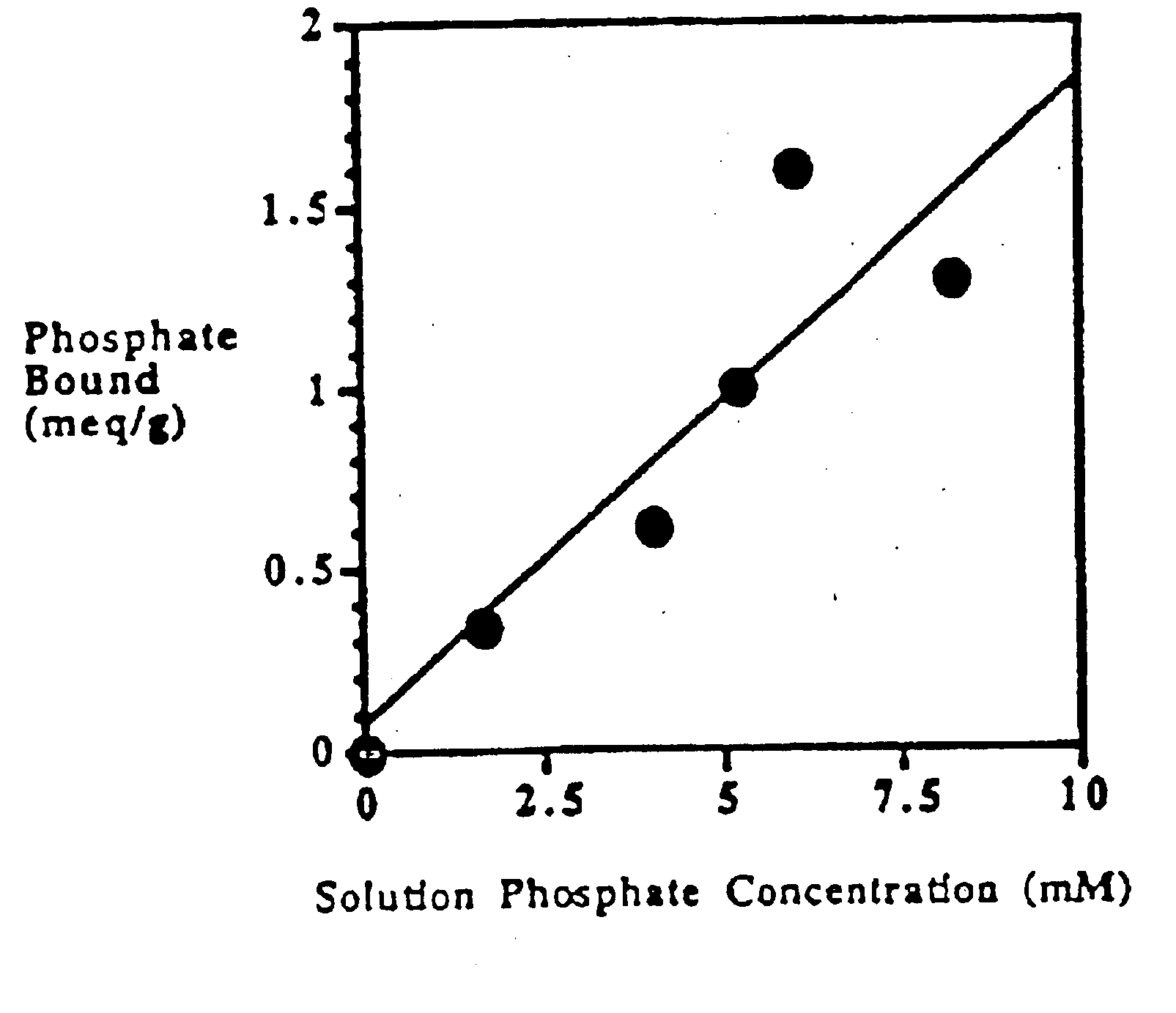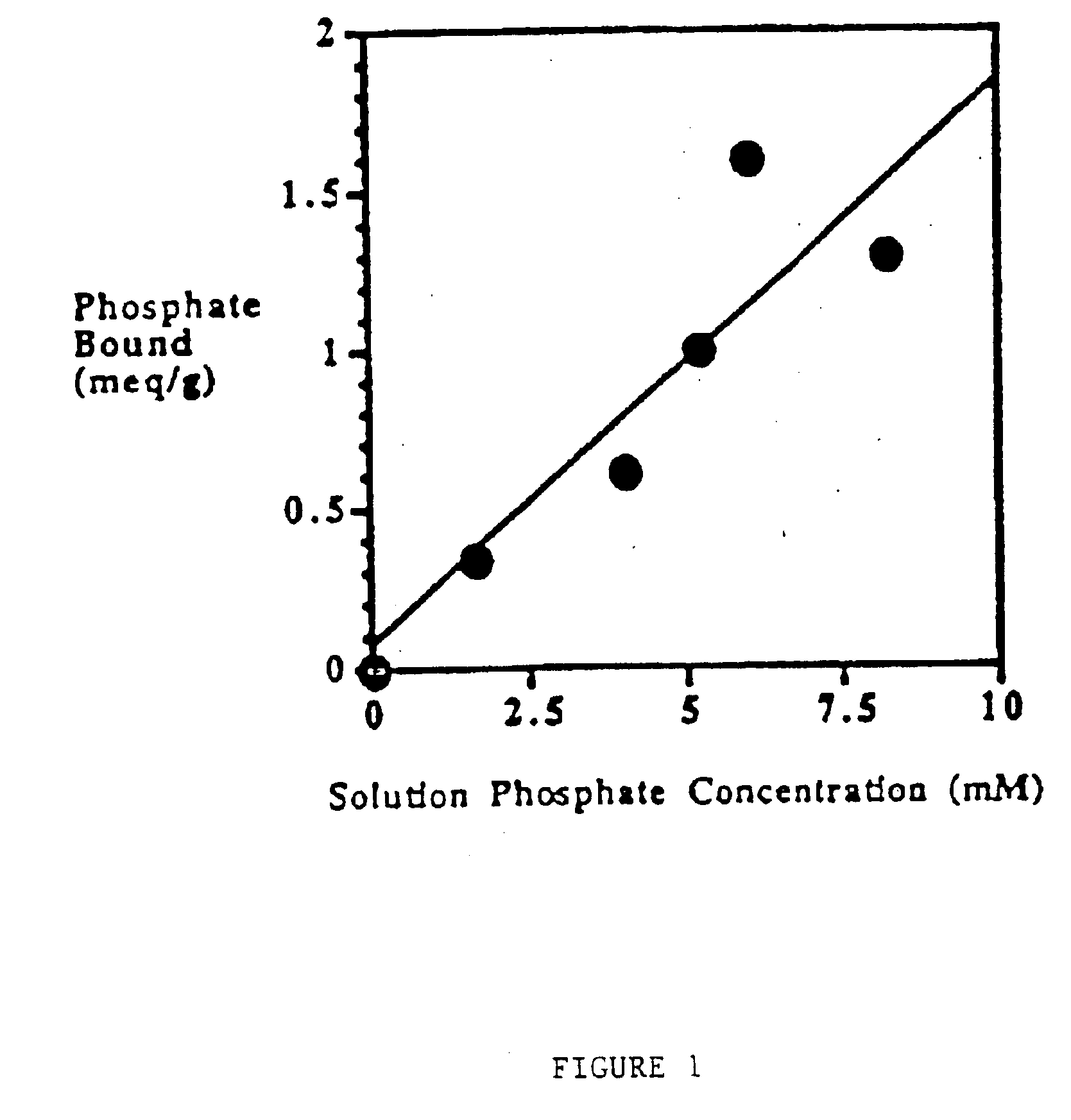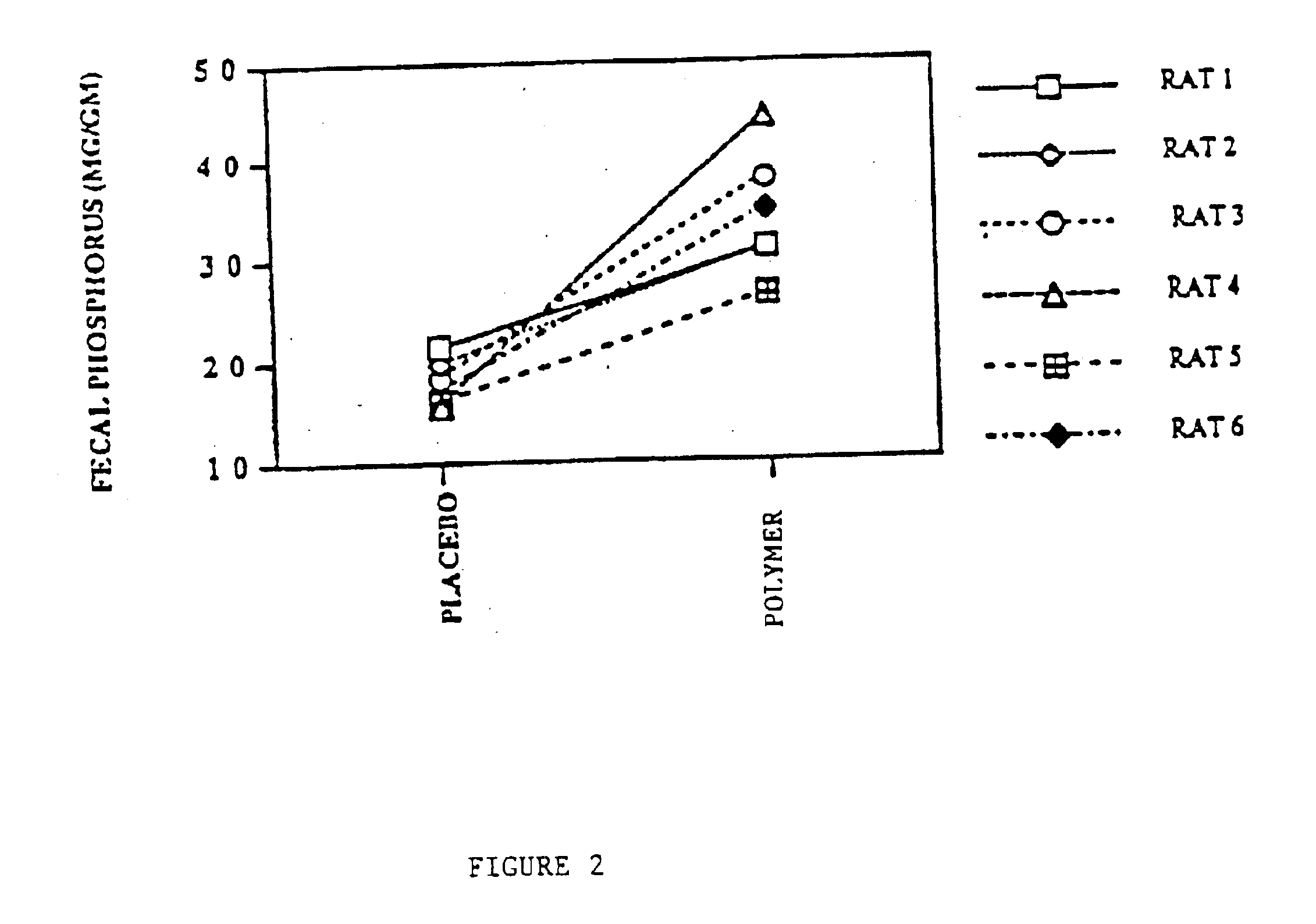Method of making phosphate-binding polymers for oral administration
a phosphate-binding polymer and oral administration technology, applied in the direction of anti-noxious agents, drug compositions, metabolic disorders, etc., can solve the problems of hyperphosphatemia, dialysis and dietary phosphate reduction are generally unsuccessful in adequately reversing hyperphosphatemia, and the invasive nature of dialysis, so as to increase the absorption effect and reduce the serum level of phospha
- Summary
- Abstract
- Description
- Claims
- Application Information
AI Technical Summary
Benefits of technology
Problems solved by technology
Method used
Image
Examples
examples
Candidate polymers were tested by stirring them in a phosphate containing solution at pH 7 for 3 hours. The solution was designed to mimic the conditions present in the small intestine.
Solution Contents10-20 mM Phosphate80 mM Sodium Chloride30 mM Sodium Carbonate
The pH was adjusted to pH 7, once at the start of the test and again at the end of the test, using either aqueous NaOH or HCl. After 3 hours the polymer was filtered off and the residual phosphate concentration in the test solution was determined spectrophotometrically. The difference between the initial phosphate concentration and the final concentration was used to determine the amount of phosphate bound to the polymer. This result is expressed in milliequivalents per gram of starting polymer (meq / g).
Table 1 below shows the results obtained for several polymers. Higher numbers indicate a more effective polymer.
TABLE 1PhosphateBoundPolymer(meq / g)*Poly(allylamine / epichlorohydrin)3.1Poly(allylamine / butanediol diglycidyl ether...
PUM
| Property | Measurement | Unit |
|---|---|---|
| weight | aaaaa | aaaaa |
| insoluble | aaaaa | aaaaa |
| concentration | aaaaa | aaaaa |
Abstract
Description
Claims
Application Information
 Login to View More
Login to View More - R&D
- Intellectual Property
- Life Sciences
- Materials
- Tech Scout
- Unparalleled Data Quality
- Higher Quality Content
- 60% Fewer Hallucinations
Browse by: Latest US Patents, China's latest patents, Technical Efficacy Thesaurus, Application Domain, Technology Topic, Popular Technical Reports.
© 2025 PatSnap. All rights reserved.Legal|Privacy policy|Modern Slavery Act Transparency Statement|Sitemap|About US| Contact US: help@patsnap.com



